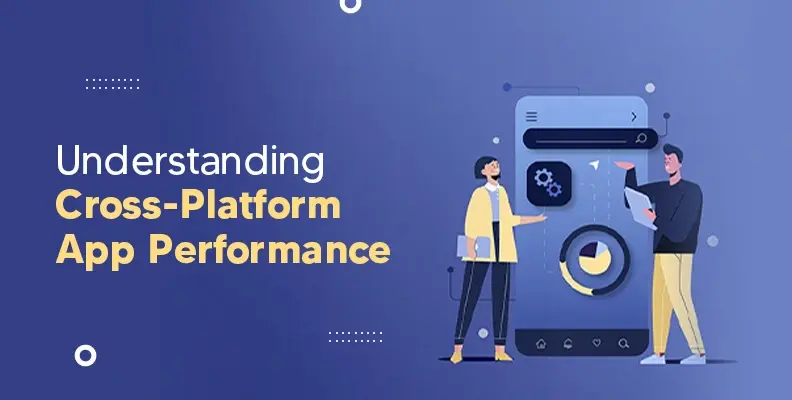Loading.....
Role of Performance Optimization in Cross-Platform App Success

In the world of mobile app development, cross-platform solutions have gained significant popularity due to their ability to streamline the development process, reduce costs, and expedite time-to-market. However, with the convenience of cross-platform development comes the need for performance optimization. Let's explore the essential aspects of performance optimization in cross-platform apps and explore best practices to ensure that your app runs smoothly on various platforms and devices.
Understanding Cross-Platform App Performance

Performance optimization in cross-platform apps involves making your application run efficiently across multiple platforms, including iOS, Android, and possibly web. It encompasses various factors, including:
- Load Times: Fast loading times are crucial for retaining users. Users have little patience for slow-loading apps, and they might abandon your app if it takes too long to start.
- Responsiveness: Your app should respond quickly to user interactions, such as tapping buttons or scrolling. Laggy and unresponsive apps can frustrate users.
- Resource Usage: Efficiently manage device resources, such as CPU, memory, and battery. Resource-hungry apps can drain the user’s device and lead to negative reviews.
- Consistency: Ensure consistent performance across different devices and operating systems. What works well on one platform should work similarly on others.
Top 10 Best Practices for Performance Optimization

- Image Optimization
- Choose the right file format: Use modern image formats like WebP, which offer better compression and quality.
- Compress images: Utilize image compression tools to reduce file size without compromising quality.
- Implement lazy loading: This technique loads images only when they come into view, saving bandwidth and enhancing user experience.
- Minimize HTTP Requests
- Combine CSS and JavaScript files: Minimize HTTP requests by bundling multiple files into one.
- Use asynchronous loading: Load scripts asynchronously to prevent blocking the rendering of your web page.
- Browser Caching
- Content Delivery Network (CDN)
- Mobile Optimization
- Use responsive web design: Create a single website that adapts to various screen sizes and devices.
- Test for mobile performance: Use tools like Google's Mobile-Friendly Test to identify and fix issues.
- Optimize for touch interactions: Ensure buttons and links are large enough for easy tapping.
- Reduce Server Response Time
- Opt for faster hosting: Choose a reliable and fast web hosting service.
- Optimize server resources: Regularly monitor and fine-tune your server to improve response times.
- Eliminate Render-Blocking Resources
- Load critical CSS inline: Inline the essential CSS styles to eliminate render-blocking issues.
- Use async or defer attributes: For non-critical scripts, use the async or defer attributes to prevent them from blocking rendering.
- Content Compression
- Monitoring and Testing
- Content Delivery and Hosting
One of the first areas to address in performance optimization is image optimization. Large and unoptimized images can significantly slow down the website. To ensure your website loads quickly, follow these image optimization practices:
Each element on your website, such as images, scripts, and stylesheets, generates an HTTP request. Reducing the number of HTTP requests can dramatically improve your website's load time:
Browser caching allows frequently visited web pages to load faster by storing a copy of the webpage's static resources on the user's device. Set appropriate cache headers to instruct browsers to cache your website's assets, reducing server load and load times for returning visitors.
Leveraging a Content Delivery Network (CDN) is a powerful way to distribute your website's content across multiple servers worldwide. This reduces the physical distance between users and the server which results in faster loading times. Cloudflare, Akamai, and Amazon CloudFront are some popular CDN providers.
As mobile device usage continues to rise, ensuring your website is optimized for mobile is essential. Google places a strong emphasis on mobile-friendliness when it comes to rank websites. Follow these best practices for mobile optimization:
The time it takes for your server to respond to a user's request can significantly affect your website's performance. You can reduce the server response time by:
Render-blocking resources like JavaScript and CSS files can delay the rendering of a webpage. Address this issue by:
Enabling GZIP or Brotli compression on your server can significantly reduce the size of your website's files, resulting in faster loading times. Most modern web servers and hosting providers support compression settings.
Regularly monitor and test your website's performance using tools like Google PageSpeed Insights, GTmetrix, and WebPageTest. These tools can provide insights into performance issues and suggest improvements.
Choosing a reliable web hosting provider is crucial. Opt for a provider that offers high uptime and fast server response times. Additionally, consider using secure and efficient protocols, such as HTTPS, to enhance both security and performance.
Conclusion
Performance optimization is a critical aspect of cross-platform app development. By following these best practices, you can ensure that your app runs smoothly and efficiently on a variety of devices and platforms. Keep in mind that performance optimization is an ongoing process, and regular monitoring and updates are essential to maintain a high-quality user experience.
 Back to blog
Back to blog












